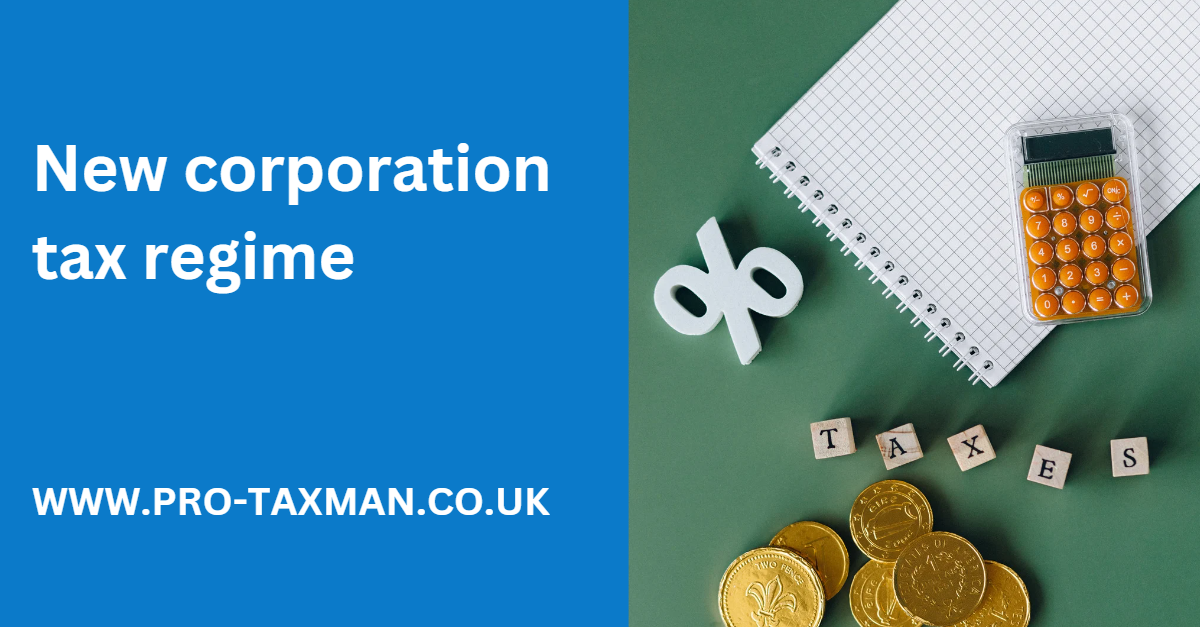Changes to the corporation tax regime come into effect from 1 April 2023 – the start of the financial year (FY) 2023. From that date there will no longer be a single rate of corporation tax; rather, the rate at which a company pays tax on its profits will depend on the level of those profits.
Small profits rate
Companies whose taxable profits are below the lower limit continue to pay tax on those profits at the rate of 19%.
The lower limit is set at £50,000 for a stand-alone company.
Main rate
Companies with profits above the upper profits limit will from 1 April 2023 pay corporation tax at the main rate of 25% on those profits.
The upper limit is set at £250,000 for a stand-alone company.
Availability of marginal relief
Where a company’s profits fall between the lower and upper limits (£50,000 and £250,000 for a stand-alone company), corporation tax is charged at the rate of 25% as reduced by marginal relief. This gives an effective rate of between 19% and 25% depending on where in the band the profits fall.
Marginal relief is calculated by the following formula:
F X (U – A) x N/A
Where:
F is the standard marginal relief fraction
U is the upper limit
A is the amount of augmented profits
N is the amount of the taxable profits.
For the financial year 2023, the marginal relief fraction is 3/200.
Augmented profits are total taxable profits plus qualifying exempt distributions that are received from companies that are not 51% subsidiaries or owned through a consortium.
Where the company has no qualifying exempt distributions (so that A and N in the above formula are the same), the formula can be simplified to:
F x (U – N)
Example
A company prepares accounts to 31 March each year. For the year to 31 March 2024, it has taxable profits of £120,000. It did not receive any qualifying exempt distributions.
It must pay tax of £30,000 (£120,000 @ 25%) less marginal relief.
As the company has no qualifying exempt distributions, the simplified marginal relief calculation can be used.
The marginal relief is therefore 3/200 (£250,000 – £120,000) = £1,950.
The company’s corporation tax bill is therefore £28,050 (£30,000 – £1,950), an effective rate of 23.375%.
Associated companies and short accounting periods
If a company has associated companies, the lower and upper limits are divided by the number of associated companies plus one.
The following table shows the lower and upper limits for companies with between zero and five associates.
| Number of associates | Lower profits limit | Upper profits limit |
| 0 | £50,000 | £250,000 |
| 1 | £25,000 | £125,000 |
| 2 | £16,667 | £83,333 |
| 3 | £12,500 | £62,500 |
| 4 | £10,000 | £50,000 |
| 5 | £8,333 | £41,667 |
The limits are also proportionately reduced if the accounting period is less than 12 months.
Accounting period straddling 1 April 2023
Where the accounting period straddles 1 April 2023, the profits must be apportioned. Those relating to the period before 1 April 2023 are taxed at 19%, whereas those relating to the period on or after 1 April 2023 are taxed according to the rules set out above, prorating the limits accordingly.
Need professional accounting service or accounting advice? Contact us to book a 15-min Free Consultation with us today.
To find out more please follow us on Facebook, Twitter, or LinkedIn. Feel free to contact us on 0333 006 4847 or request a call back by texting 075 6464 7474

